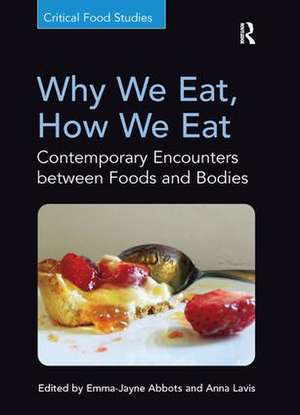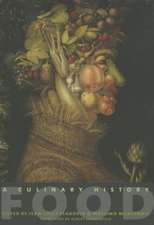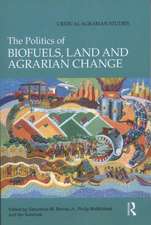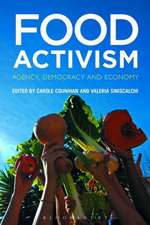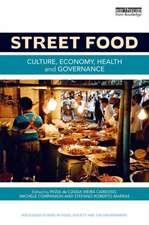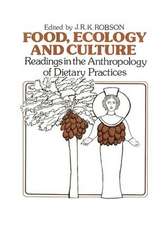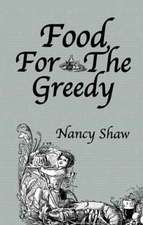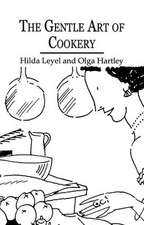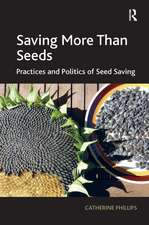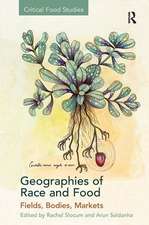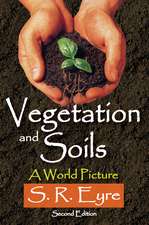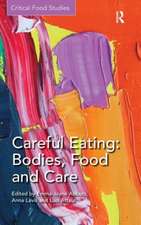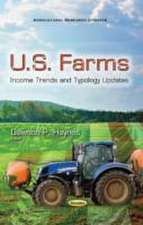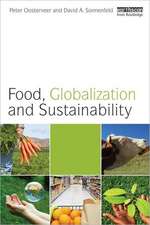Why We Eat, How We Eat: Contemporary Encounters between Foods and Bodies: Critical Food Studies
Editat de Emma-Jayne Abbots, Anna Lavisen Limba Engleză Paperback – 26 aug 2016
| Toate formatele și edițiile | Preț | Express |
|---|---|---|
| Paperback (1) | 489.26 lei 43-57 zile | |
| Taylor & Francis – 26 aug 2016 | 489.26 lei 43-57 zile | |
| Hardback (1) | 1061.06 lei 43-57 zile | |
| Taylor & Francis – 11 iun 2013 | 1061.06 lei 43-57 zile |
Din seria Critical Food Studies
-
 Preț: 324.68 lei
Preț: 324.68 lei -
 Preț: 265.01 lei
Preț: 265.01 lei -
 Preț: 341.57 lei
Preț: 341.57 lei -
 Preț: 310.36 lei
Preț: 310.36 lei -
 Preț: 481.76 lei
Preț: 481.76 lei -
 Preț: 435.59 lei
Preț: 435.59 lei - 17%
 Preț: 245.03 lei
Preț: 245.03 lei -
 Preț: 436.14 lei
Preț: 436.14 lei - 18%
 Preț: 1006.77 lei
Preț: 1006.77 lei -
 Preț: 389.70 lei
Preț: 389.70 lei - 12%
 Preț: 312.43 lei
Preț: 312.43 lei - 17%
 Preț: 258.24 lei
Preț: 258.24 lei -
 Preț: 385.54 lei
Preț: 385.54 lei - 18%
 Preț: 1000.27 lei
Preț: 1000.27 lei -
 Preț: 469.34 lei
Preț: 469.34 lei -
 Preț: 489.48 lei
Preț: 489.48 lei -
 Preț: 498.48 lei
Preț: 498.48 lei - 18%
 Preț: 1002.99 lei
Preț: 1002.99 lei -
 Preț: 469.34 lei
Preț: 469.34 lei -
 Preț: 469.34 lei
Preț: 469.34 lei - 17%
 Preț: 272.14 lei
Preț: 272.14 lei -
 Preț: 389.38 lei
Preț: 389.38 lei - 18%
 Preț: 1008.30 lei
Preț: 1008.30 lei - 30%
 Preț: 848.40 lei
Preț: 848.40 lei - 18%
 Preț: 1002.36 lei
Preț: 1002.36 lei - 18%
 Preț: 997.93 lei
Preț: 997.93 lei -
 Preț: 284.52 lei
Preț: 284.52 lei - 18%
 Preț: 886.04 lei
Preț: 886.04 lei
Preț: 489.26 lei
Nou
Puncte Express: 734
Preț estimativ în valută:
93.65€ • 101.76$ • 78.72£
93.65€ • 101.76$ • 78.72£
Carte tipărită la comandă
Livrare economică 21 aprilie-05 mai
Preluare comenzi: 021 569.72.76
Specificații
ISBN-13: 9781138246942
ISBN-10: 1138246948
Pagini: 326
Dimensiuni: 156 x 234 x 18 mm
Greutate: 0.45 kg
Ediția:1
Editura: Taylor & Francis
Colecția Routledge
Seria Critical Food Studies
Locul publicării:Oxford, United Kingdom
ISBN-10: 1138246948
Pagini: 326
Dimensiuni: 156 x 234 x 18 mm
Greutate: 0.45 kg
Ediția:1
Editura: Taylor & Francis
Colecția Routledge
Seria Critical Food Studies
Locul publicării:Oxford, United Kingdom
Cuprins
Contents: Introduction: contours of eating: mapping the terrain of body/food encounters, Emma-Jayne Abbots and Anna Lavis; Part I Absences and Presences: How We (Do Not) Eat What (We Think) We Eat: Invisible foodscapes: into the blue, Kaori O’Connor; The substance of absence: exploring eating and anorexia, Anna Lavis; Home and heart, hand and eye: unseen links between pigmen and pigs in industrial farming, Kim Baker; Interlude: Eating practices and health behaviour, Simon Cohn. Part II Intimacies, Estrangements and Ambivalences: How Eating Comforts and Disquiets: Advancing critical dietetics: theorizing health at every size, Lucy Aphramor, Jennifer Brady and Jacqui Gingras; Eating and drinking kefraya: the karam in the vineyards, Elizabeth Saleh; Negotiating foreign bodies: migration, trust and the risky business of eating in highland Ecuador, Emma-Jayne Abbots; Interlude: Reflections on fraught food, Jon Holtzman. Part III Contradictions and Co-Existences: What We Should and Should Not Eat: Chewing on choice, Sally Brooks, Duika Burges Watson, Alizon Draper, Michael Goodman, Heidi Kvalvaag and Wendy Wills; ’It is the bacillus that makes our milk’: ethnocentric perceptions of yogurt in postsocialist Bulgaria, Maria Yatova; The transition to low carbon milk: dairy consumption and the changing politics of human-animal relations, Jim Ormond; Interlude: Reflections on the elusiveness of eating, Anne Murcott. Part IV Entanglements and Mobilizations: The Multiple Sites of Eating Encounters: Confessions of a vegan anthropologist: exploring the trans-biopolitics of eating in the field, Samantha Hurn; Metabolism as strategy: agency, evolution and biological hinterlands, Rachael Kendrick; Ingesting places: embodied geographies of coffee, Benjamin Coles; Complex carbohydrates: on the relevance of ethnography in nutrition education, Emily Yates-Doerr; Interlude: Entanglements: fish, guts, and bio-cultural sustainability, Elspeth Probyn; Index.
Notă biografică
Emma-Jayne Abbots is Lecturer in Social/Cultural Anthropology and Heritage at the University of Wales Trinity St David and Research Associate at the Food Studies Centre, SOAS, University of London, UK. Anna Lavis is Research Fellow at the School of Health and Population Sciences, University of Birmingham and Research Associate at the Institute of Social and Cultural Anthropology, University of Oxford, UK.
Recenzii
’Eating is a bundle of activities and experiences, and involves both destruction and creation. While an everyday practice for everyone, it is both complicated and complex. This book is a masterful examination of the multidimensional nature of eating in symbolic, economic, political, material and nutritional terms, and it is a must-read for anyone interested in food and eating.’ Stanley Ulijaszek, University of Oxford, UK ’This fascinating book is such a timely and welcome addition to the field of food studies. It sets out to destabilise and challenge what we think we know about food and eating by bringing once separate categories into intimate proximity, to touch each other and produce a sensous map of the contours of eating. Spaces between meaning and materiality, commensality and viscerality, and knowledge and bodily practices are oiled and moved into provocative conceptual hinges, revealing complex and layered relations of eating. This work will undoubtedly shift theoretical and applied debates about food and eating to a new level, and will have significance to those many disciplines that have a vested interest in why we eat, and how we eat.’ Megan Warin, University of Adelaide, Australia 'This fascinating book would be of interest not only to scholars in the social sciences and humanities interested in critical food studies, but to any reader interested in the social, cultural and political dimensions of food and eating practices.' LSE Review of Books
Descriere
Why We Eat, How We Eat maps new terrains in thinking about relations between foods and bodies. With the central premise that food is always both symbolic and material, the volume explores the intersections of current critical debates regarding how and why individuals eat. Through a series of case studies and theoretical interludes it examines how foods and bodies both haphazardly encounter, and actively engage with, one another in ways that are simultaneously social, economic, political, biological and sensorial.
